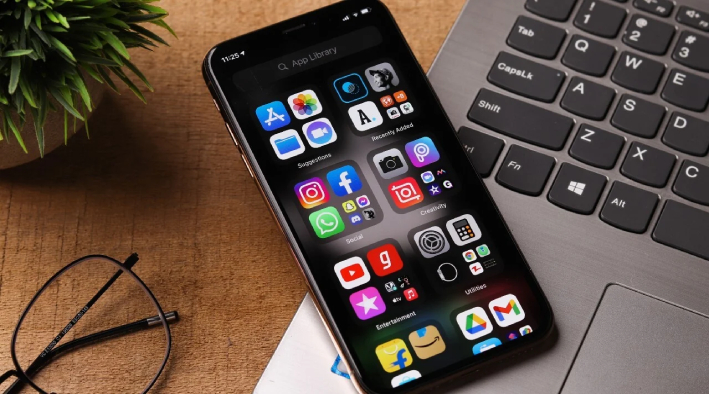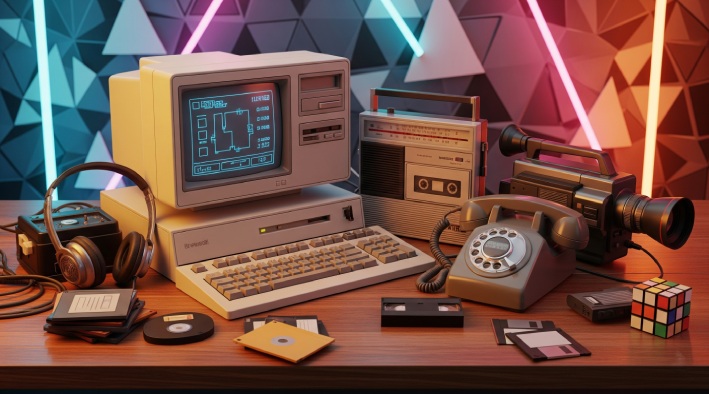How to Organize Apps on iPhone Easily – 2025

If you have ever needed an app and could not find it, you are in good company. I can also recall how my iPhone looked like a complicated picture where each part was separated from another. Apps were scattered everywhere. I then decided to organize apps on iPhone in a better way. I mean, once you do it, you will not believe how fast and easy is to use your phone. Let me show you the steps, methods, and tricks. Why You Should Organize Apps on iPhone Let’s start from the very beginning: why wrap your head around that? In fact, having a screen full of mess is not only frustrating but also time-consuming. What do you think, how long would it take you to the camera if you had to scroll through pages three times? In short, by learning to organize apps on iPhone, you save minutes every day. On top of that, the just feeling of cleaning your home reminds of you. I realized that after clean up I also used my favorite apps more frequently. Start With Decluttering Sort after you decline. Remove apps that you do not use anymore. Actually, I had two shopping apps that I did not use for the last five months. Thus, I decided to delete those apps. Decluttering gives room to you to easily organize apps on iPhone because you only show your face what counts. Use Folders for Groups Folders are amazing In fact. I keep all the social apps like Instagram, WhatsApp, and Messenger together in a single folder. Then I put banking apps in another. Making a folder is as easy as dragging one app over another. No need to overthink it. You are not limited to smartphones; with folders, you can even organize apps on iPhone like in a tidy one. In fact, it works more efficiently in this way. Take Advantage of the App Library Apple gave us the App Library since iOS 14. To be frank, it was a complete game-changer for me. The best part is that it does not take much from your time as the App Library does the categorization itself. For instance, an app might be categorized under “Productivity” or “Entertainment.” If you are a neat freak and do not want a lot of clutters on your main screen, you have an option to hide pages and still use the App Library. Without a doubt, it is yet another clever way of organizing apps on iPhone with little or no effort. Arrange by Frequency The tip I most love is to: put the most-used apps on the first screen. I keep the phone, messages, and email right there. After that, I move less-used ones to later screens. When you arrange apps on iPhone by usage, it just works. You don’t have to keep looking through until you find what you need. Customize With Widgets In addition to looking nice, widgets are very useful. For example, I use a calendar widget that displays my schedule at a glance. This ensures that I do not have to open the app all the time. Thus, while you visually organize apps on iPhone, the addition of widgets makes your home screen even more usable. Try Color Coding Well, as funny as it sounds, this method actually works. I had all my apps color-coded—blue, red, green, and yellow. It looked brilliant to be honest. How did you do that, my friends even asked me. It is not the most effective method to manage apps on iPhone, though, it definitely gives the screen a sleek look. Hide What You Don’t Need Have you ever thought of hiding apps in your home screen? I hide apps like Paytm or Amazon that I don’t use daily. So they are still in the App Library, waiting for you. So when I want them, I search. Hiding is a neat trick to organize apps on iPhone without deleting. Personalize Your Layout There is a certain joy in this. Rearranging icons to suit your taste really makes a difference. Some people like to have their icons arranged in a very neat way, while others prefer to have them grouped together. I put my gym apps together because fitness is a priority. Adding the personal elements make the method you organize apps on iPhone exclusive. Final Thoughts iPhone users learning to organize their apps is not simply a beauty contest. It translates into a victory of time, saving a user from frustration, and making one gets about their business using the phone. For me, it was as if I just cleaned up my room—everything was simpler and more convenient. I mean, start small, like maybe creating one folder just for today. Gradually your phone will become feel as if it was brand new. Also Read:- How to Block Apps on iPhone: Easy Steps for Better Control
80s Technology: A Journey Back in Time

Neon colors, weird music, and not least 80s technology are what to come into one’s mind first of the 1980s. It was a decade when gadgets from labs and offices gradually started to appear in people’s homes. If we look at those times from today’s perspective, the technology is mind-bogglingly simple, but for people then the tech, it was revolutionary. The Rise of Personal Computers The basis for 80s technology was, without a doubt, the personal computer. Devices such as Apple II, Commodore 64 and IBM PC turned the tables not only on the way to work but also on the ways of entertainment. One of the changes these computers made was bringing word processing, games, and programming into people’s houses. Most people would start learning the BASIC language. To the majority of people, this was the first time they could see computer potential skills. Video Games and Consoles Among the 80s tech, gaming was another aspect that stirred much interest. In the family room, the Nintendo Entertainment System (NES) and Sega Master System were the two big things everyone talked about. Kids were playing these games for hours, which we thought were so fun, but they never got bored. Such were the days when going to arcades was in vogue as high-yield was the popularity of arcades. There were games like Pac-Man, Donkey Kong, and Space Invaders most everywhere. The clinking of coins and the clicking of joysticks were what one could consider youth’s anthems. These games of then may appear pixelated and thus outdated in comparison with today’s super-realistic graphics. Yet back in those days they were like magic. Music and Portable Devices Music was just one of the areas where 80’s technology completely changed things. The Walkman made it to the rank of an icon of popular culture. Very quickly, it was possible for individuals to have their music stored on cassette tapes with them anywhere they went. Can you only remember when you first used your headphones on the street—it was incredibly cool, as if the whole world could see you having your own concert. Boom boxes were) no less popular. Large, noisy, and colorful those gadgets were transforming the streets into dance floors. In addition, this epoch had brought mixtapes into the world as well. For many teenagers, recording songs from the radio was a daily routine. Communication in the 1980s Unlike today’s smartphones, 80s technology had landline telephones with long cords. Later on, cordless phones did come but they were large and had a short range. In case another member of the household had picked up the other line, your conversation was instantly overheard. At the same time fax machines were becoming popular as well. The businesses adapted this technology in order to send documents quickly, which was a great invention compared to snail-mail. While now it might look slow, for the 1980s, it was really fast communication. The Magic of Television and Media Television was another big part of 1980s technology. Cable TV was available in almost every household and that gave people the opportunity to switch among the dozens of channels that were at their disposal. MTV, which came into existence in 1981, is a major factor in music people listen to these days. Listening to music videos on repeat became a new craze. VHS players became available in people’s homes as well. Members of the family could either record shows they wanted to watch later or simply rent movies. Friday nights usually meant a visit to the nearby video store. It was a time that not only gave you entertainment but also made you remember it. Office and Business Tools In addition to 80s home gadgets, the 80’s tech innovation had a significant impact on the office as well. Word processors and printers were around and they simply helped workers to perform tasks rapidly. Floppy disks got widely used for data storage and they more or less became the norm in offices. Even though they only had a few megabytes of space, it was a lot for those times. Moreover, the introduction of calculators and the earliest spreadsheets made an accounting and a finance department a complete transformation. The paper ledgers that were totally trusted before were in a less favorable position because of the technology. The new tools made a fewer number of mistakes and gave businesses half of their valuable time back which was a very considerable cause of companies. Looking Back at 80s Technology Looking back at 1980s technology, it almost sounds like one is talking about a world that no longer exists. It was a combination of enthusiasm, surprise, and originality. Of course, in terms of size and speed, the gadgets of the past were less compared to what we have now. Nonetheless, they were the essential building blocks that led to the advancement of the technology we have today. The moment I experience the typical cassette tape noise or visually apprehend a floppy disk in a museum, I am instantly flooded with memories of the past. It points out the fact that each step forward in the journey of progress is like an incremental movement. Fashion and music would have not been as accessible as they are right now if we didn’t witness all those 80s-era innovative breakthroughs in parallel worlds. Final Thoughts It can be said the main feature of 80’s technology was that it represented nothing but crazy genius ideas for that time, and it had a huge impact on the cultural and digital revolution, more or less. This era was the one in which digital technology has become an integral part of people lives, marking the beginning of computers, video games, portable music, and home video entertainment, all in the palm of one’s hand. What is more, on a global scale, the 1980s was the decade turned the world onto the idea that technology was no longer necessarily a cold and impersonal monolith that only a few could understand and use, but
